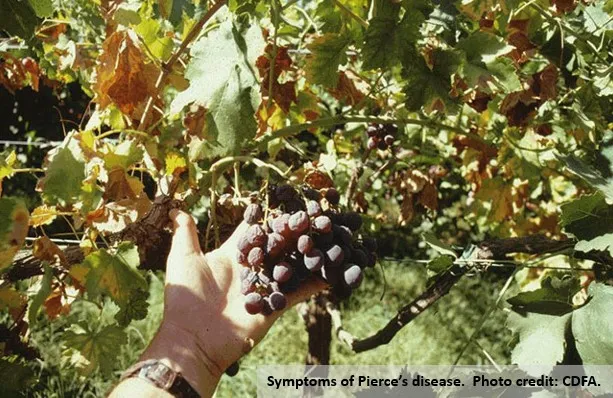Xylella fastidiosa

Pierce's disease is a disease of grapes caused when the bacterium Xylella fastidiosa colonizes the water-conducting system (the xylem) of the host plant and creates a significant blockage. It is spread from plant to plant by sap-feeding insects, such as sharpshooters and spittlebugs.
In some regions, this disease had been rapidly spread by the glassy-winged sharpshooter (GWSS), but there have been no GWSS detections in Humboldt or Del Norte counties.
Some vines recover from Pierce's disease, with the probability of recovery depending on the date of infection and temperatures in the winter following infection. Vines that become infected in June or later have the greatest probability of recovery. Therefore, preventing spring infections (bud break through May) is critical to prevent systemic infections that cause chronic disease. Recovery is promoted by low winter temperatures; mild winters result in fewer vine recoveries.
Some grape varieties are particularly susceptible (Pinot Noir, Chardonnay), and are less likely to recover from an infection. Plants that are symptomatic for a second year should be removed, because they are unlikely to be productive and are also a reservoir of X.fastidiosa that can lead to new infections.
Planting new vines? Resistant varieties have recently been developed.
Think you have a vine with PD? Let us know
